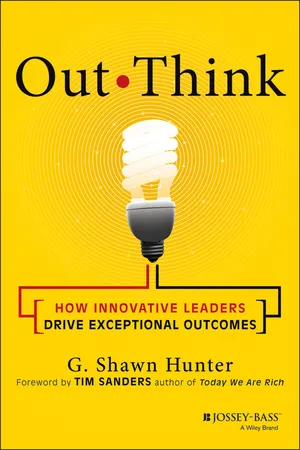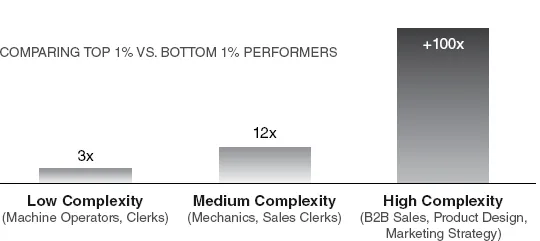![]()
Chapter 1
Marketquake: Moving beyond Arrested Decay
I can't recall a period of time that was as volatile, complex, ambiguous, and tumultuous. As one successful executive put it, “If you're not confused, you don't know what's going on.”
—Warren Bennis, founding chairman of The Leadership Institute, University of Southern California
In 1859, a prospector named William S. Bodey discovered gold high in the Sierra mountains of California, and within 20 years the developing town—named after him—had a population of more than ten thousand people. The town, whose name was eventually changed to “Bodie,” was a thriving and rapidly growing community, as the people harvested the rich silver and gold deposits from mines dug into the hills. The residents quickly built all the necessary foundations of a full community, including a town hall, merchants, fire and police departments, and schools. Such was the demand for lumber and materials to support the housing explosion that even a railroad was constructed to deliver building materials to Bodie from the nearby town of Mono Mills.
By 1915, Bodie was labeled a “ghost town”; by 1918, the rail line had been dismantled; and by 1942, the town was completely abandoned. However, to this day first the U.S. National Park Service, then the state's park service in conjunction with a private foundation, has maintained the town in an intentional state of arrested decay to show how life was in the town when it was abandoned. That is, the structures, furniture, streetlights, and even the last markings on the school chalkboard have been kept just as they were left, in an attempt to neither improve upon the town nor allow it to fall further into disrepair.1
Many organizations behave in much the same manner. We build processes, operations, behaviors, and cultural habits based on the one good idea or market opportunity that surfaced either when the company was founded or during the last product or service triumph the company enjoyed. Then we congratulate ourselves and reminisce about the good old days instead of moving forward.
If we spend our time and resources focusing on building more of the same, instead of something different, we wind up competing only on price, which is a death spiral. No company will ever remain the cheapest in this world of commoditization. Even if it were possible to maintain having the lowest price, this will almost necessarily mean having the smallest profit margins, as the cost of the goods and services sold approaches the market offering price. The cheapest products and services often have a greater likelihood of suffering from lack of product integrity and early obsolescence. And being the cheapest does not build a secure customer base but instead attracts the discount buyer, a buyer with no loyalty and one who often brings a lot of headache.
The urgency for organizational culture change that supports democratized innovation practices has never been higher. Companies that recognize that there is opportunity in chaos and that traditional structures are no longer the answer are likely to lead the way in innovation, leaving those stuck in yesterday's corporate culture behind.
Science fiction author William Gibson once said, “The future is already here, it just isn't very evenly distributed.” We've entered a new era. Call it the age of imagination, ideation, conceptualization, creativity, innovation—take your pick. Creativity, mental flexibility, and collaboration have displaced one-dimensional intelligence and isolated determination as core ingredients of a competitive advantage.
Creative people who can bring innovation to the world are our greatest capital now, and with the right leadership and inspiration, creativity can be nurtured in everyone. In any field, expertise is not only an expectation—it is a given. Success for workers and companies centers on being nimble, creative, and having the initiative to bring unique solutions to unexpected problems.
The new creative class includes people working in all sectors of the economy, including engineering, design, science, poetry, music, technology, and whose economic contribution is to create new ideas and take action that yields innovation. They come from all over the globe, collaborating and easily moving from one challenge to the next. The drivers of those in this creative force have a tenacious curiosity and passion for what they do.
Dan Pink, author of A Whole New Mind: Why Right-Brainers Will Rule the Future, has popularized the importance of “symphonic” thinking. This concept dates back to 1907, when composers Jean Sibelius and Gustav Mahler considered the nature of symphonies. According to Sibelius, the symphony is about the “profound logic that created an inner connection between all the motives” and that “the symphony should be like the world: it must embrace everything.”2
Symphonic thinkers see the big picture; they look at the whole system and take their information from a variety of sources. They take a multidimensional approach to solving problems, seeing connections, and finding effective solutions. Such thinkers include Margaret Mead and Gregory Bateson, who developed interdisciplinary perspectives in systems theory; Amartya Sen, an Indian economist, who made great contributions to social-choice theory and welfare economics, particularly focusing on the poor; George Pólya, a Hungarian mathematician, whose work in mathematics education focused on experience-based techniques for problem solving rather than rote memorization; and Martha Nussbaum, an American philosopher noted for, among other things, her championing the idea of reconnecting education to the humanities, rather than viewing it strictly as an economic tool.
Organizations are succeeding by being open to innovation. Amazon went from being an online bookseller to a powerhouse when it started offering a wide variety of web-based services. Google and Apple have added a host of online services to their core competencies. And Toyota has enjoyed a decade-spanning, market-dominating run owing to its policy and practice of empowering its frontline employees to be innovators and change agents. Management has come a long way since Henry Ford once quipped, “Why is it, whenever I ask for a pair of hands, a brain comes attached?”
Companies that can out think their competitors in this chaotic environment usurp the market position of incumbents consistently: Blockbuster got Netflixed,3 Borders Books got Amazoned, Tower Records got iTuned, and, if iTunes isn't careful, it might get Spotified, as Spotify offers access to more than 15 million songs that can be streamed for $9.99 per month.
We need to understand that knowledge and expertise are easily accessible, common, expected, and cheap or even free. They no longer represent a lasting competitive advantage. We have moved to the age of creative, symphonic thinking, where the ability to harness seemingly disparate pieces of information and ideas and mash them into wholly new iterations that can be used to create innovative solutions is, in fact, the competitive advantage for individuals and for organizations.
Embracing a creativity agenda is not easy when we have quarterly earnings, deadlines, and clear outcomes at stake. Reading this, you may be tempted to think, “Sounds great. I believe in the value of creativity and conceptual thinking, but how does that possibly affect my company's bottom line?”
As Dan Goleman relates in his seminal book Working with Emotional Intelligence, researchers John Hunter (Michigan State), Frank Schmidt, and Michael Judiesch (University of Iowa) conducted a study in 1990 in which they evaluated the economic value of the top 1 percent of contributors to company profits.4 Their findings revealed that top performers in professions that require dealing with high levels of complexity (business-to-business salespeople, lawyers, doctors, designers, and engineers) contributed more than one hundred times the productivity and productive impact than the bottom 1 percent in those same professions.
As the figure below illustrates, as the level of job complexity increases, so does the productive impact value of those at the top of their game. Being able to conceptualize—to be creative—pays off. And being able to draw that discretionary level of initiative, creativity, and passion out of those around us will distinguish the best leaders of the future from those of the past.
Creativity vs. Innovation
This book is about how to lead teams to innovation, so how does that differ from creativity and invention? Paul Sloane, author of The Innovative Leader, lays out the distinctions among the various terms:
Creativity is the capability or act of conceiving something original or unusual.
Innovation is the implementation of something new.
Invention is the creation of something that has never been made before and is recognized as the product of some unique insight.
If you have a brainstorm meeting and dream up dozens of new ideas then you have displayed creativity but there is no innovation until something gets implemented. Somebody has to take a risk and deliver something for a creative idea to be turned into an innovation. An invention might be a product or device or method that has never existed before. So every invention is an innovation. But every innovation is not an invention. When your company first published its website, that was a major innovation for the company even though many other websites already existed.5
Sloane goes on to say that, while we tend to think of all these terms as applying to a physical product, they can also be applied to services. For our purposes here, “product” means both, unless specified otherwise, and “innovation” includes applying creativity, that is, taking creative ideas to their implementation.
The Innovation Gap Shrinks
When the rate of change inside an organization is slower than the rate of change outside an organization, the end is in sight.
—Jack Welch, former chairman of General Electric
While we may intuit that creativity is a vital component of innovation, we urgently need a process by which we can accelerate our new-product and value-creation pipelines. Throughout the organizations that my colleagues and I at Skillsoft Corporation have visited in recent years while interviewing executives and collaborating with thought leaders, we've consistently discovered an innovation-delivery gap that is shrinking. This gap is between an organization's ability to create new and distinctive value that the market recognizes and rewards, and the speed at which competitors can emerge and deliver innovative products and services to the market.
Several accelerating forces are influencing this competitive marketplace innovation gap. These include the ubiquity of technologies that enable global collaboration, and the increased accessibility of new ideas and commercial opportunities in emerging markets. Added to these are the broader adoption of open-innovation practices and companies' increasing tendencies to develop capabilities with individuals and groups outside of their own organizations.
Technology Globalizes Innovation
Norm Merr...

